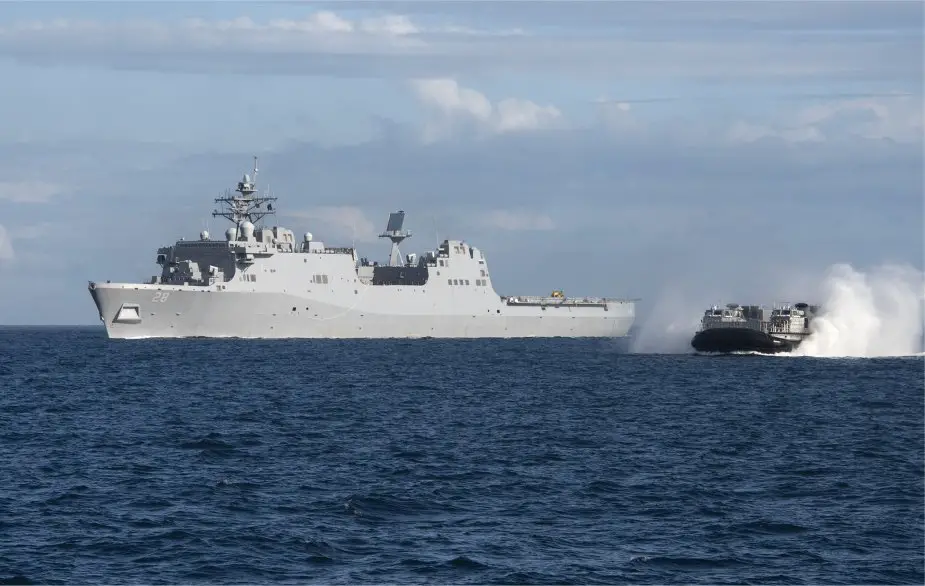According to information published by the U.S. DoD on July 29, 2022, the Navy has commissioned its newest amphibious transport dock, the future USS Fort Lauderdale (LPD 28) during a ceremony in Fort Lauderdale, Florida.
Follow Navy Recognition on Google News at this link
 San Antonio class amphibious transport dock USS Fort Lauderdale (Picture source: U.S. DoD)
San Antonio class amphibious transport dock USS Fort Lauderdale (Picture source: U.S. DoD)
The nearly 25,000-ton Fort Lauderdale is 684 feet in length. Four diesel engines will power the ship to speeds in excess of 22 knots, and it will homeport at Naval Station Norfolk in Norfolk, Virginia.
The future USS Fort Lauderdale is the 12th San Antonio-class ship, designed to support embarking, transporting, and bringing elements of 650 Marines ashore by landing craft or air-cushion vehicles. A flight deck hangar further enhances the ship's capabilities, which can support the MV-22 Osprey tilt-rotor aircraft.
San Antonio-class ships can support a variety of amphibious assault, special operations, or expeditionary warfare missions, operating independently or as part of Amphibious Readiness Groups (ARGs), Expeditionary Strike Groups, or joint task forces. These capabilities allow the U.S. Navy to protect America's security abroad, promote regional stability, and preserve future peace.
The San Antonio class is powered by four sequentially turbocharged marine Colt-Pielstick diesel engines driving two shafts. She has a crew of 28 officers and 333 enlisted sailors.
The class has a length of 208.5 m (684.1 ft) overall, a beam of 31.9 m (104.7 ft) extreme, and a draft of 7.0 m (23.0 ft). She can reach a top speed of 22 knots (41 km/h).
The San-Antonio class USS Fort Lauderdale is armed with two Bushmaster II 30 mm close-in-guns, and two Rolling Airframe Missile launchers for air defense.
The class was designed to minimize radar signature. Techniques that reduce radar cross-section (RCS) make the ships more difficult to locate and target.
Enhanced survivability features include improved nuclear blast and fragmentation protection and a shock-hardened structure. The fiber-optic shipboard-wide area network (SWAN) connects onboard-integrated systems. The network will allow "plugin and fight" configuration, updating, and replacing hardware more easily when newer technology becomes available.



